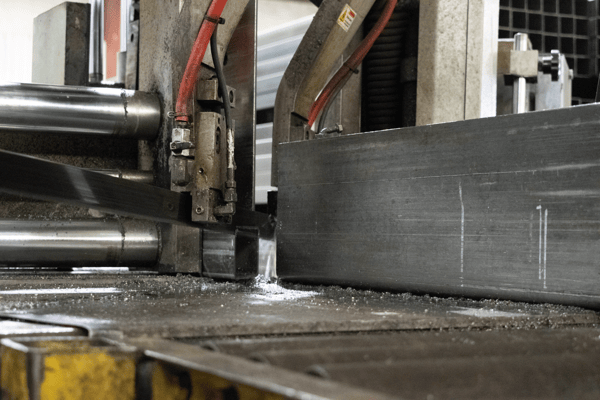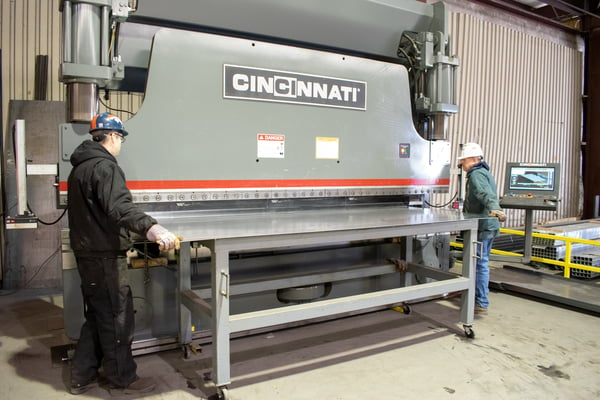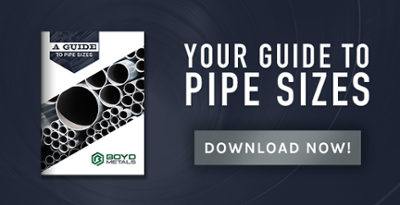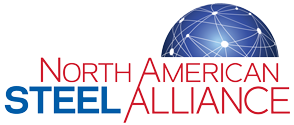If you’re a metal worker, then you're no stranger to sawing and shearing. As two of the most common fabrication processes in the metals industry, sawing and shearing deliver consistent, accurate cuts on a large scale across numerous industries.
From tubing and piping to sheet and plate metal, sawing and shearing help get metal materials cut down to the precise sizes needed for further processing. But what exactly is involved in these processes? And how effective are they in getting a quality cut?
The Sawing Process
In the metals industry, band sawing is one of the primary methods used to cut metal materials. This process involves using a powered saw with a long, sharp blade consisting of a continuous band of toothed metal stretched between two or more wheels. This provides uniform cutting as a result of an evenly distributed tooth load.
Metal band saws are best known for cutting metal stock down to manageable sizes and cutting bar and pipe stock to certain lengths. Band saws are equipped with fine, marginally bent teeth that cut copper, aluminum, thin-walled brass, and other non-ferrous metals. More sophisticated versions of this saw type are automated (via CNC) for high-volume cutting.
Bends in band saw teeth create cuts that are slightly wider than blade thickness. This prevents saw blades from getting pinched and stuck by metal. Band saw teeth come in straight, wave, and raker blade tooth patterns, with the raker pattern, used most commonly when cutting metal.
Types of Band Saws
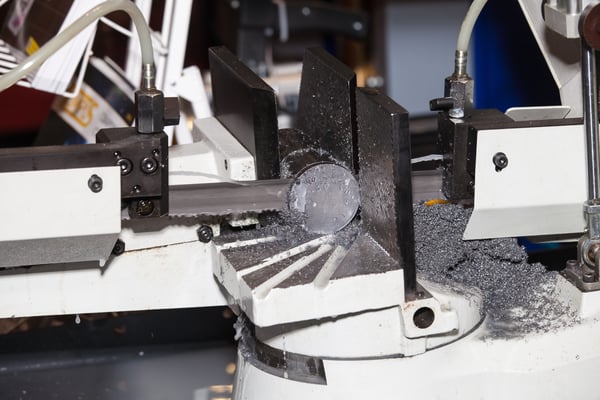
Horizontal Band Saws: these saws hold the metal stationary while the blade swings down through the cut. This configuration is used to cut long materials such as pipe or bar and cut stock to length to accommodate sizing requests.
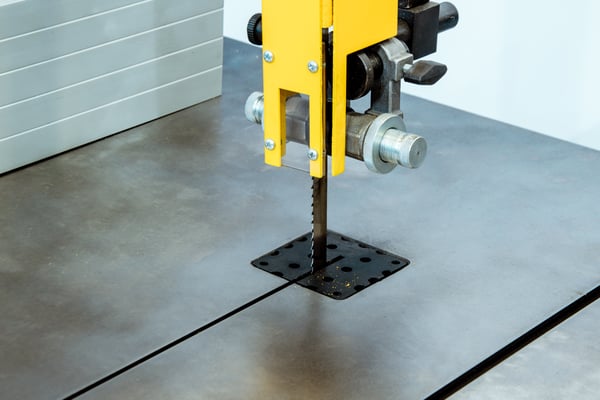
Vertical Band Saws: these saws are also known as contour saws, and keep the blade's path stationary while the metal is moved across it. This type of saw can be used to complete more complex cutting jobs involving polishing, filing, and cutting precise contours in metal.
Why Use Band Saws?
- Band saws have an amazing ability to make accurately straight cuts.
- Technological advancements have equipped band saws with superior blades that have led to increased production rates and blade life. Commonly made up of a bimetal construction with high-speed steel teeth, modern band saw blades are able to cut through metal like a hot knife through butter.
- Advanced features of band saws like blade-tracking adjustment and dual-bearing, blade-guided rollers consistently provide a professional, precise finish.
- Band saws substantially reduce waste because they offer smaller kerfs (material lost during cutting) than other cutting processes. Wider blades used by other saw types increase waste by consuming more material, whereas a band saw's narrow blades decrease waste.
The Shearing Process
Shearing is another commonly used method to cut metal. During the shearing process, an upper blade and a stationary lower blade are forced past each other at an offset to remove a portion of the metal stock. Hydraulic shearing machines are used to cut, bend, press, and punch metal sheets and plates. Metals that are commonly sheared include:
When metal is inserted into a hydraulic shearing machine, the metal is secured by strong clamps to prevent shifting under powerful pressure. A back gauge or squaring arm is used to ensure cuts are even and smooth for 90-degree cuts.
With the ability to cut metal sheets 0.5 mm thick to over 25 mm thick, hydraulic shearing machines are the tools of choice when it comes to manufacturing industries wanting maximized efficiency rates, lower operational costs, and optimal precision.
Types of Hydraulic Shearing Machines
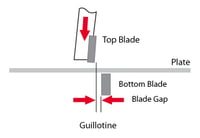 Guillotine design: this type of shearing machine is typically more expensive, accurate, and has as a stronger shearing capacity. A guillotine shear, by design, has a drive system that ensures the upper blade comes straight down through the material from start to finish. One main feature of the guillotine shear is having the ability to adjust the rake angle (cutting angle of top blade). This is beneficial for variations in material thickness and allows for more precision for heavier materials with less distortion.
Guillotine design: this type of shearing machine is typically more expensive, accurate, and has as a stronger shearing capacity. A guillotine shear, by design, has a drive system that ensures the upper blade comes straight down through the material from start to finish. One main feature of the guillotine shear is having the ability to adjust the rake angle (cutting angle of top blade). This is beneficial for variations in material thickness and allows for more precision for heavier materials with less distortion.
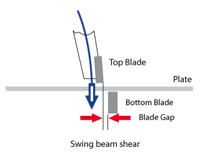
Swing Beam Design: this type of shearing machine is usually less expensive and is ideal for cutting thinner materials 1/4" and under. On a swing beam shear, the swing beam moves with the upper blade in a circular arc and penetrates the metal sheet above the lower blade, allowing for faster strokes per minute. Unlike the guillotine design, the rake angle adjustment is unavailable.
Why Use Hydraulic Shearing?
- Hydraulic shearing is the most efficient way to make straight-line cuts on flat sheet stock.
- Hydraulic shearing machines are fast and accurate, making it easy to cut a lot of metal in factories.
- Hydraulic shearing machines don’t require a lot of maintenance, making them cost-effective.
- Hydraulic shearing machines are able to cut relatively small lengths of material when needed.
At Boyd Metals, we offer a range of high-quality metal products and first-step processing services to get you the materials you need, exactly the way you need them. Check out the Boyd Metals Blog page for more info about the metals industry, and don't forget to download our FREE Guide to Pipe Sizes.


